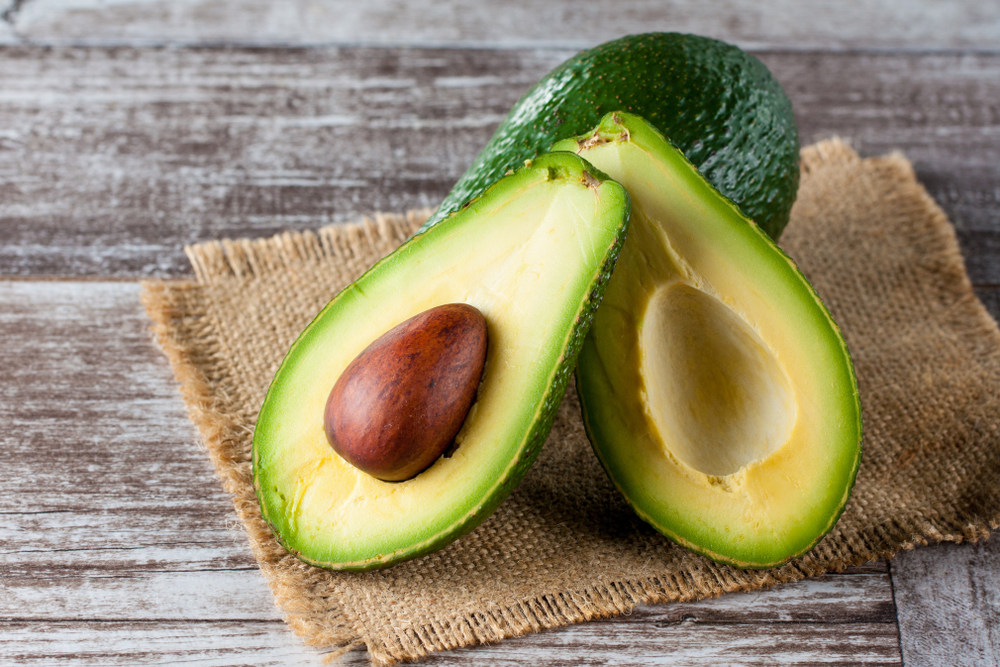ushi has become quite popular worldwide, with an increasing number of people enjoying this traditional Japanese cuisine.
While it’s widely known for its delicious taste, it’s essential to be aware of how perishable raw fish can be. One common question sushi lovers have is how long sushi can safely sit out before consumption.
Sushi is often made with a combination of raw fish, rice, and other ingredients, such as avocado and cucumber.
The perishable nature of these components makes it crucial to store and serve sushi at the right temperature. This ensures not only the taste and texture of the sushi but also its safe consumption.
Key Takeaways
- Freshly prepared sushi should be consumed within a short time to maintain its quality and safety.
- Proper storage and preservation of sushi is essential to reduce the risk of foodborne illnesses.
- Recognizing signs of spoiled sushi helps to ensure a safe and enjoyable dining experience.
Understanding Sushi Ingredients

Sushi is a popular dish whose main ingredient is vinegared rice. This dish comes in various types and can include a wide range of ingredients such as vegetables, fish, and meat.
To have a better understanding of sushi, it is essential to explore these ingredients and their characteristics.
Sushi rice, also known as vinegared rice, plays a central role in sushi-making. It is made by mixing cooked short-grain rice with a seasoned rice vinegar mixture.
The rice has a slightly sticky texture that helps hold the ingredients together, enabling easy shaping and handling.
The fish used in sushi can either be raw or cooked. Raw fish, such as salmon or tuna, is sliced to create sashimi or placed atop sushi rice to make nigiri.
Cooked fish like eel or crab meat can also be used in sushi rolls or other types of sushi. It is crucial to use fresh, high-quality fish to ensure both a delicious taste and food safety.
Apart from fish, sushi also features various other ingredients. Seaweed, specifically the type called nori, is commonly used as a wrap for sushi rolls.
Vegetables like avocado, cucumber, and asparagus are popular fillings or toppings in sushi as they add flavor, color, and texture to the dish.
Additionally, there are numerous types of sushi to suit different preferences. Nigiri consists of a slice of fish or other topping pressed onto a small bed of vinegared rice, while rolls wrapped in seaweed or thinly sliced cucumber contain rice and various fillings.
Other types like temaki are cone-shaped hand rolls featuring rice, fish, and vegetables.
In summary, sushi is a versatile dish that can be customized with a wide range of fresh ingredients. The key to good sushi is using high-quality vinegared rice and diligently selecting both raw and cooked ingredients.
By understanding the characteristics and roles of each ingredient, you can better appreciate the beauty and taste of sushi.
Sushi and Perishability
Sushi is a perishable food item that requires proper handling and storage to maintain its quality and safety. It is made from raw or cooked fish, seafood, and other ingredients such as rice, vegetables, and sauces.
Due to its composition, sushi becomes a potential breeding ground for bacterial growth, which can lead to spoilage and foodborne illnesses.
When left at room temperature, sushi should not sit out for more than two hours, according to the FDA’s two-hour rule. This rule is implemented to prevent the growth of harmful bacteria, which can cause food poisoning.
After two hours, the risk of bacterial contamination increases significantly, and the quality of the sushi may be compromised.
Refrigerating sushi is an effective way to extend its shelf life and maintain its freshness. Sushi should be stored in a clean, airtight container and placed in the refrigerator within two hours of being prepared or purchased.
When properly refrigerated at temperatures below 40°F (4°C), sushi can usually retain its quality for up to 24 hours.
It is essential to be aware of the signs that indicate spoiled sushi. When sushi goes bad, it may exhibit a pungent, fishy smell, have a slimy texture, or its colors may appear dull or discolored.
Consuming spoiled sushi poses a risk of foodborne illnesses, so it is crucial to discard it if any of these signs are present.
In the context of a party, when sushi may be exposed to fluctuating temperatures and other environmental factors, it’s crucial to follow safe food handling practices, such as placing sushi on ice or using a chilled serving platter.
Doing so can help prolong the sushi’s freshness and reduce the risk of spoilage and bacterial growth.
In conclusion, maintaining the quality and safety of sushi comes down to proper storage, handling, and awareness of perishability.
Following the FDA’s guidelines and practicing safe food handling can ensure that you can enjoy fresh sushi without the risk of foodborne illnesses.
Safety Measures for Sushi Consumption

Proper sushi handling and consumption is essential to ensure that the food remains fresh and safe to eat. One vital aspect to consider is bacteria growth, which can lead to food poisoning. To avoid this, it is necessary to follow specific guidelines.
When it comes to raw sushi, such as sashimi and maki, freshness is crucial. Fresh fish will have a vibrant color, a firm texture, and a pleasant smell.
If you notice a strong, fishy odor or a soft texture, it is likely that the sushi is no longer fresh and may harbor bacteria. Use your senses to determine the quality of the sushi, but when in doubt, discard it.
Refrigeration plays a critical role in preserving sushi. Ideally, raw sushi should be kept in the refrigerator at or below 40°F (4°C).
Make sure to consume it within 24 hours of purchasing. When storing sushi in the fridge, wrap it in foil or place it in an airtight container to retain its freshness.
For cooked fish sushi, it is generally safer as there is a decreased risk of bacterial growth. However, cooked fish still needs to be stored and handled safely, following the same refrigeration guidelines as raw sushi.
Freezing is another method to extend the shelf life of sushi, particularly when dealing with raw fish. Freezing fish at a temperature of -4°F (-20°C) for at least seven days can significantly reduce the risk of parasites.
Nevertheless, this method cannot entirely eliminate bacteria, so it is essential to consume sushi promptly after thawing.
Salt, a natural preservative, can help to inhibit bacterial growth and keep the sushi fresh for a longer period. Some sushi dishes like cured fish may have longer shelf lives due to the salting process, but it is still necessary to handle and store them properly.
In conclusion, following these safety measures when handling and consuming sushi will keep your meal fresh and reduce the risk of foodborne illnesses.
Be conscious of the sushi’s smell, color and texture, and practice proper refrigeration to maintain the highest quality, taste, and safety for your sushi dining experience.
Storage and Preservation
Sushi is a delicate dish that requires proper storage and preservation to maintain its quality and freshness. To ensure its taste and safety, it is essential to follow some basic storage guidelines.
After purchasing or preparing sushi, it’s best to consume it immediately. However, if you have leftovers, it’s crucial to store them appropriately. For cooked sushi, like rolls made with cooked crab or shrimp, you can store them in the fridge for a day or two.
Raw sushi, on the other hand, should be consumed within a few hours to avoid spoilage and potential foodborne illnesses.
When storing sushi, use an airtight container to prevent moisture and air from affecting the quality of the ingredients. Placing a sheet of plastic wrap between the sushi and the container’s lid can also help to create a barrier and maintain freshness.
Additionally, keep the storage container in the coldest part of the fridge, ideally between 32°F (0°C) and 41°F (5°C). This temperature range will help preserve the sushi without freezing it.
For longer-term storage, you can consider placing sushi in the freezer. However, this method is not recommended for raw sushi, as freezing may alter the texture and taste of the fish.
If you must freeze sushi, ensure it is wrapped tightly in plastic wrap and placed in an air-tight container before placing it in the freezer. Thaw the sushi in the fridge before consuming.
To store leftover sushi, follow these steps:
- Place sushi in an airtight container.
- Separate the layers with plastic wrap, if necessary.
- Keep the container in the coldest part of the fridge, maintaining a temperature between 32°F (0°C) and 41°F (5°C).
In summary, proper storage and preservation methods are vital for maintaining the quality of sushi. Use airtight containers, plastic wrap, and appropriate temperatures to keep your sushi fresh and safe to eat.
Bear in mind that raw sushi should be consumed within a few hours, while cooked sushi can be stored in the fridge for a day or two. Freezing is not recommended for raw sushi, but can be done for longer-term storage with proper wrapping techniques.
Identifying Spoiled Sushi

When sushi has been sitting out for too long, it can spoil, leading to undesirable tastes and potentially causing foodborne illness. It is crucial to know how to identify spoiled sushi to prevent consuming unsafe food.
One of the key indicators of spoiled sushi is its smell. Fresh sushi should have a mild, ocean-like odor. If the sushi has a strong, pungent, or ammonia-like smell, it has likely deteriorated and should not be consumed. Additionally, if the sushi has an unusually sour or off odor, it may be a sign of spoilage.
Inspecting the appearance of the sushi can also provide valuable information. Mold and slime are both signs that the sushi is no longer safe to eat.
Mold may appear as a fuzzy, discolored growth on the sushi or any of its components, while slime may give the sushi a slippery or slimy texture. If either of these is present, discard the sushi immediately.
The freshness of the sauces and ingredients used in making sushi can also be an indication of spoilage. For example, if the soy sauce or other sauces used on the sushi have developed an off smell or unusual color, they should not be consumed.
Similarly, pickled ginger that has become slimy or discolored should be discarded.
When it comes to storing leftover sushi, it’s important to follow proper storage practices to ensure the sushi remains safe to eat. Leftover sushi should be stored in airtight containers in the refrigerator as soon as possible to reduce the risk of spoilage.
Consuming sushi that has been improperly stored or left out for too long increases the risk of foodborne illness.
In summary, identifying spoiled sushi involves paying attention to its smell, appearance, and the freshness of the ingredients and sauces used.
Being vigilant in assessing sushi’s quality can help prevent the consumption of unsafe food and reduce the risk of foodborne illness.
Sushi in Parties and Gatherings
Sushi is a popular option for parties and gatherings due to its attractive presentation, various colors and flavors, and reputation as a healthier food option.
When sushi is prepared with raw ingredients, it is crucial to store and serve it properly to maintain its freshness and prevent it from spoiling during the event.
At a party, sushi can be both homemade or bought from a restaurant. Regardless of its origin, it is essential to follow proper storage protocols.
For instance, keeping sushi on a bed of ice can help maintain its ideal temperature. Additionally, using foil or covering the sushi platter can help retain its freshness.
The critical question of how long sushi can sit out at a party depends on several factors, including the ingredients, temperature, and how it is displayed.
In general, sushi should not sit out at room temperature for more than two hours. When the party is outdoors, or the room temperature exceeds 90°F, the safe time limit for sushi consumption reduces to one hour.
To ensure the sushi remains fresh and safe to eat, party hosts should:
- Keep sushi chilled: To maintain the optimum temperature, place the sushi platter on a bed of ice and replenish the ice as necessary.
- Store leftovers properly: If there is any sushi remaining after the event, wrap it tightly in foil or plastic wrap and store it in the refrigerator.
- Monitor the time: Advise guests to enjoy the sushi early on in the party, especially if temperatures might exceed the recommended time limits.
By following these guidelines, party hosts can provide a colorful and healthy food option at their gatherings while ensuring the sushi stays safe to consume.
Understanding Japanese Cuisine

Japanese cuisine is known for its delicate balance of flavors and emphasis on fresh ingredients. Sushi is a popular type of Japanese dish that has gained global recognition and appeal.
There are various kinds of sushi, such as maki, which is rolled sushi, and California rolls, a Westernized version of maki that typically includes ingredients like avocado and crab.
Sushi is typically made with a combination of raw fish or seafood, sticky rice, nori (seaweed), and sometimes vegetables.
The rice is seasoned with a mixture of vinegar, sugar, and salt, which gives it a distinct flavor. The protein content and the use of fresh ingredients make sushi a healthy food option for many.
In terms of making sushi, safety and proper handling of raw fish and seafood is crucial. The freshness and quality of the ingredients can greatly affect the taste and overall experience of eating sushi.
For sushi to be safe to eat, it must be prepared according to strict guidelines and stored at the correct temperature.
When serving sushi, it’s important to keep it cool and limit the amount of time it is left at room temperature. This is because raw fish and seafood are highly perishable and can harbor harmful bacteria if not stored and handled properly.
Reheating sushi, especially those with raw ingredients, is generally not recommended. The heat can alter the texture and flavor of the fish and rice, negatively impacting the overall taste.
If necessary, sushi containing cooked ingredients can be reheated, but it’s essential to heat it to a safe internal temperature to ensure it remains safe to eat.
Understanding Japanese cuisine, especially sushi, requires acknowledging the importance of using high-quality, fresh ingredients and maintaining proper food safety practices. By doing so, one can fully appreciate and enjoy this culinary delight from Japan.
Also, read some similar posts:
Frequently Asked Questions
How long is sushi safe to eat when unrefrigerated?
Sushi is best consumed as fresh as possible. When unrefrigerated, sushi should not be left out for more than two hours. If the room temperature is above 90°F (32°C), sushi’s safe duration will reduce to an hour.
Eating sushi left out beyond these time limits increases the risk of foodborne illnesses.
What is the safe duration for leaving vegetable sushi out?
Vegetable sushi, while not containing raw fish, should also not be left out for more than two hours at normal room temperature.
If the temperature exceeds 90°F (32°C), limit it to one hour. Following these guidelines helps maintain the safety and taste of vegetable sushi.
How long can California rolls stay at room temperature?
Since California rolls contain cooked ingredients like imitation crab and avocado, they are less likely to spoil quickly. However, it is still advisable not to leave them at room temperature for more than two hours.
If the room temperature is above 90°F (32°C), consume them within an hour.
Is eating sushi left out overnight risky?
Yes, eating sushi left out overnight can be risky, as it increases the chances of foodborne illnesses. Bacteria can grow on raw fish and other ingredients, making it unsafe to eat when left out for too long.
It is always best to enjoy sushi fresh and to discard any leftovers sitting overnight at room temperature.
What is the shelf life of tuna sushi in the fridge?
Tuna sushi should ideally be consumed fresh, but if necessary, it can be stored in the fridge for up to 24 hours. Keep it tightly covered with plastic wrap to preserve its quality and taste. For optimal flavor and safety, try to consume it as soon as possible.
How long can poke be unrefrigerated before it’s not safe to eat?
Poke, like sushi, contains raw fish and should not be left unrefrigerated for more than two hours. If the room temperature exceeds 90°F (32°C), consume it within an hour.
If poke is left unrefrigerated beyond these time limits, it may not be safe to eat and can potentially cause foodborne illnesses.







